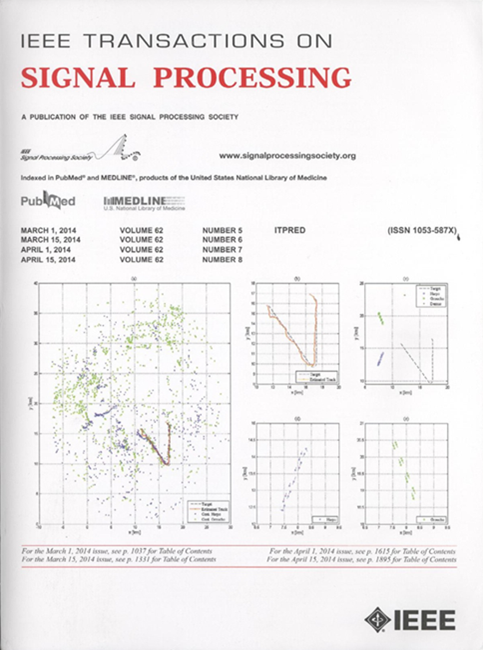Bayesian Deep Learning via Expectation Maximization and Turbo Deep Approximate Message Passing
IF 4.6
2区 工程技术
Q1 ENGINEERING, ELECTRICAL & ELECTRONIC
引用次数: 0
Abstract
Efficient learning and model compression algorithm for deep neural network (DNN) is a key workhorse behind the rise of deep learning (DL). In this work, we propose a message passing-based Bayesian deep learning algorithm called EM-TDAMP to avoid the drawbacks of traditional stochastic gradient descent (SGD)-based learning algorithms and regularization-based model compression methods. Specifically, we formulate the problem of DNN learning and compression as a sparse Bayesian inference problem, in which group sparse prior is employed to achieve structured model compression. Then, we propose an expectation maximization (EM) framework to estimate posterior distributions for parameters (E-step) and update hyperparameters (M-step), where the E-step is realized by a newly proposed turbo deep approximate message passing (TDAMP) algorithm. We further extend the EM-TDAMP and propose a novel Bayesian federated learning framework, in which the clients perform TDAMP to efficiently calculate the local posterior distributions based on the local data, and the central server first aggregates the local posterior distributions to update the global posterior distributions and then update hyperparameters based on EM to accelerate convergence. We detail the application of EM-TDAMP to Boston housing price prediction and handwriting recognition, and present extensive numerical results to demonstrate the advantages of EM-TDAMP.通过期望最大化和 Turbo 深度近似信息传递进行贝叶斯深度学习
深度神经网络(DNN)的高效学习和模型压缩算法是深度学习(DL)兴起的关键因素。在这项工作中,我们提出了一种名为 EM-TDAMP 的基于消息传递的贝叶斯深度学习算法,以避免传统的基于随机梯度下降(SGD)的学习算法和基于正则化的模型压缩方法的缺点。具体来说,我们将 DNN 学习和压缩问题表述为稀疏贝叶斯推理问题,其中采用了组稀疏先验来实现结构化模型压缩。然后,我们提出了一个期望最大化(EM)框架,用于估计参数的后验分布(E-step)和更新超参数(M-step),其中 E-step由新提出的涡轮深度近似消息传递(TDAMP)算法实现。我们进一步扩展了EM-TDAMP,并提出了一种新颖的贝叶斯联合学习框架,其中客户端执行TDAMP,根据本地数据高效计算本地后验分布,中央服务器首先汇总本地后验分布以更新全局后验分布,然后基于EM更新超参数以加速收敛。我们详细介绍了 EM-TDAMP 在波士顿房价预测和手写识别中的应用,并给出了大量数值结果,以证明 EM-TDAMP 的优势。
本文章由计算机程序翻译,如有差异,请以英文原文为准。
求助全文
约1分钟内获得全文
求助全文
来源期刊

IEEE Transactions on Signal Processing
工程技术-工程:电子与电气
CiteScore
11.20
自引率
9.30%
发文量
310
审稿时长
3.0 months
期刊介绍:
The IEEE Transactions on Signal Processing covers novel theory, algorithms, performance analyses and applications of techniques for the processing, understanding, learning, retrieval, mining, and extraction of information from signals. The term “signal” includes, among others, audio, video, speech, image, communication, geophysical, sonar, radar, medical and musical signals. Examples of topics of interest include, but are not limited to, information processing and the theory and application of filtering, coding, transmitting, estimating, detecting, analyzing, recognizing, synthesizing, recording, and reproducing signals.
 求助内容:
求助内容: 应助结果提醒方式:
应助结果提醒方式:


